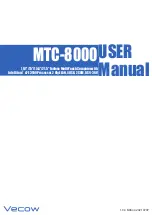
114201I – System Installation Manual
16
Installing and Connecting the Batteries
Battery Wiring Diagram
You should have received a battery-wiring diagram with your system. This battery-wiring
diagram shows how you should install the batteries, make terminal, and fuse connections. Use
the diagram as you follow the steps below.
Location
Before you start installing the batteries, you must install the system and any battery cabinets in
their permanent location. If you have not already done this, see “Location Guidelines” on
page 7 to choose a location.
CAUTION
To prevent damage to your equipment, do not move the system or separate battery
cabinets after the batteries are installed.
To make sure a location is acceptable for the system, review the requirements in Chapter 3.
Connecting the Cabinets
Wherever conductors may be exposed to physical damage, you must protect the conductors
in accordance with the NEC or (CEC). This includes battery cables between the system and a
separate battery cabinet and cables between battery cabinets (if you have more than one).
We recommend routing the battery cable through the chase nipples. The battery cables
shipped with the unit are designed for an installation with the battery cabinet immediately to
the right of (touching) the system.
If the cabinets must be farther apart, we recommend that you use conduit (cables not
included). Install the conduit for the battery cables according to local or national codes. If you
are using conduit, you must substitute your own cables for the cables shipped with the unit as
you follow the battery installation instructions. Remember that the terminal blocks supplied
with the unit and battery cabinets accept up to 4/0 AWG (21.15 mm
2
) wire. If code requires a
larger size cable, you must use cable splices. Perform the splices when the instructions
describe terminations at the terminal blocks. Use the correct type, length, and gauge of cable;
make sure your installation meets all applicable electrical codes.
Installing the Battery Cables between Cabinets
You must pull the battery cables and the equipment-grounding conductor through the
connecting nipple or through the conduit between the unit and the battery cabinet(s).
NOTE If you are using conduit, you must supply the correct length, gauge, and type of
battery cables.
Refer to the battery-wiring diagram to identify the battery cables you use to connect the unit to
the battery cabinet(s). Pull the cables through the nipple or conduit. Do not connect any cables
at this time.
If your unit has more than one battery cabinet, use the battery-wiring diagram to identify the
cables you use to connect the battery cabinets. Pull these cables through the connecting
nipple or conduit. Do not connect the cables.












































